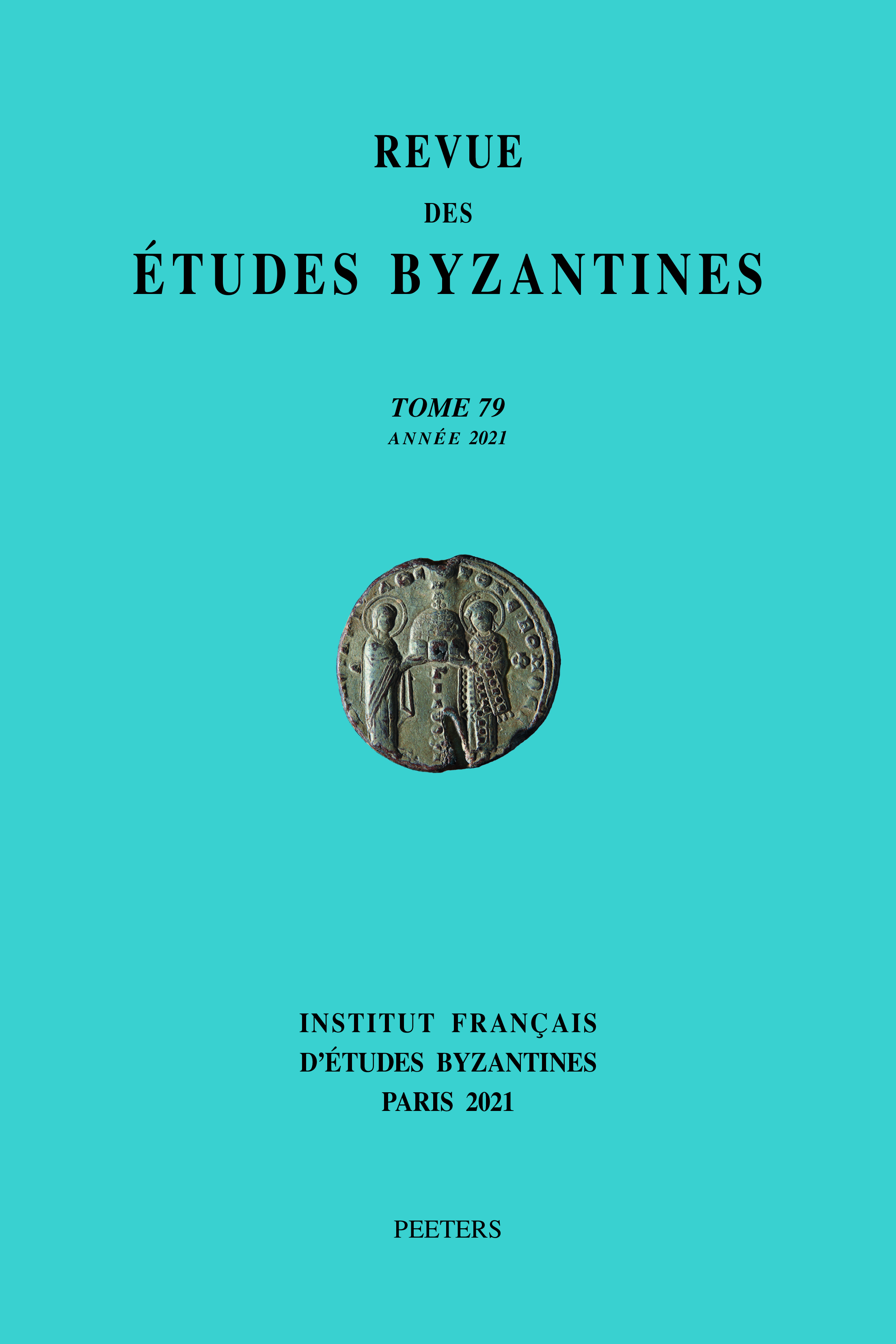 previous article in this issue previous article in this issue | next article in this issue  |

Preview first page |
Document Details : Title: Un'omelia inedita del patriarca Callisto I e l'uso dei testi conciliari foziani nella disputa contro i Latini alla metà del 14° secolo Author(s): FANELLI, Marco Journal: Revue des Études Byzantines Volume: 74 Date: 2016 Pages: 171-221 DOI: 10.2143/REB.74.0.3189077 Abstract : Presentiamo qui l’edizione critica, corredata di traduzione, di un’inedita omelia del patriarca Callisto I, conservata nell’Athos, Chilandar 8 (229), con ogni probabilità raccolta ufficiale della sua produzione pastorale. L’interesse precipuo di questo testo è stato analizzato sotto due punti di vista: 1) da un lato è stato definito il percorso di formazione e utilizzo dei testi conciliari foziani citati da Callisto e identificate le probabili fonti alle quali il patriarca attinse (anonimo del De origine schimatis III e il De synodo Photiana di Nilo Kabasilas); 2) in secondo luogo abbiamo dimostrato come alla metà del 14° s. la polemistica antilatina si appropri e rivitalizzi argomentazioni di carattere storicodocumentario (Nilo Diasorenos, Atanasio del Pantokrator, Nilo Kabasilas e Demetrio Kydones per i Greci, Filippo Bindo de Incontris per i Latini), producendo una risemantizzazione delle medesime rispetto ai tempi del concilio di Lione. La novità di Callisto consiste nell’aver introdotto questi temi nel genere omiletico. Presented here is a critical text and a translation of an unedited homily of Kallistus I preserved in Athos, Chilandar 8 (229), the official collection of his homiliarium. In order to discuss the problems connected to this text, the article is split into two parts. The first one examines the structure of the homily that contains a quotation from the acts of the second Photian Council (879-880). After reconstructing the process of formation and transmission of the collection in an abrégé in the 13th-14th c., it is observed how Kallistus’ text runs parallel to a long section from the anonymous De origine schismatis III and Neilos Kabasilas’ De synodo Photiana, probably his sources. The second part of the article presents a framework of the use of historical argumentations, and in more detail the acts of the second Photian Council, in the anti-Latin polemical literature of the mid-14th century (Neilos Diasorenos, Athanasius of Pantokrator, Neilos Kabasilas, and Demetrius Kydones for the Greeks, and Filippo Bindo de Incontris for the Latins). A change of perception in these texts is revealed in the debate against the Latins. Moreover, Kallistus, for the first time in this period, lends a new dimension to these sources because he employs them in homiletic form. |
|


